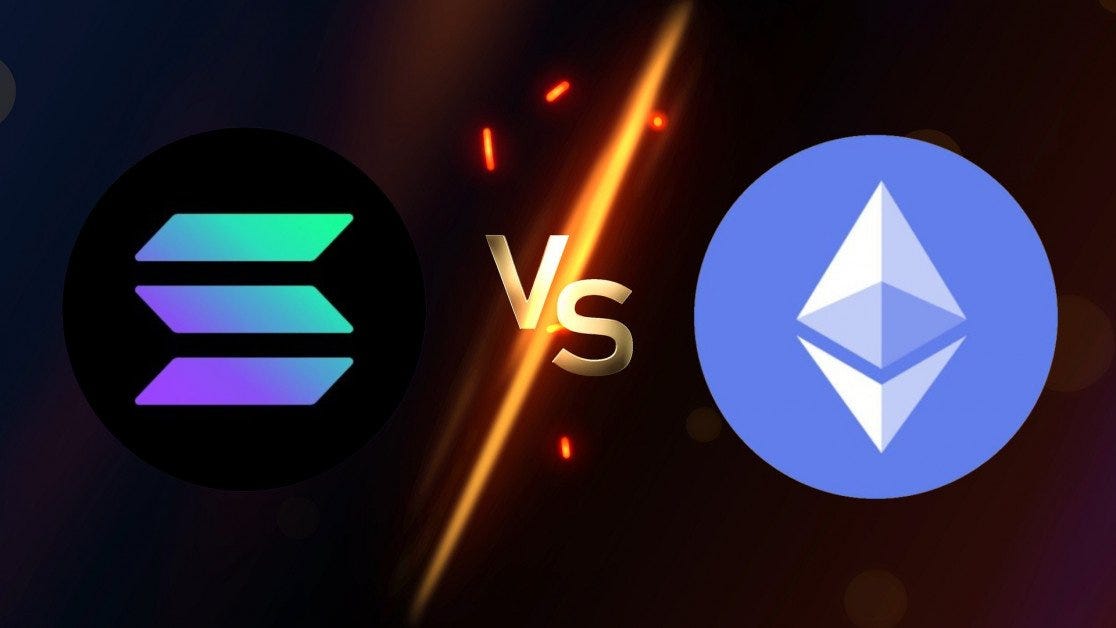In the ever-evolving landscape of blockchain technology, scalability is king—and the battle for dominance in the Layer 2 (L2) ecosystem is heating up. Two titans stand at the forefront: Ethereum, the veteran of smart contracts and decentralized applications, and Solana, the speedster known for its lightning-fast throughput and low fees. But when it comes to the Layer 2 war, who’s really coming out on top?
Let’s break it down.
Scalability and Speed
- Solana has built its reputation on speed. Thanks to its innovative Proof of History (PoH) mechanism combined with Proof of Stake, it boasts theoretical throughput of up to 65,000 transactions per second (TPS). In practice, it still leads the pack with real-world figures often exceeding 3,000 TPS. That’s blazing fast compared to most networks.
- Ethereum, on the other hand, traditionally capped at around 15-30 TPS on its base layer. But enter Layer 2 solutions—like Arbitrum, Optimism, and zkSync—and Ethereum starts to flex some serious muscle. These L2 rollups push Ethereum’s effective TPS into the thousands, offloading congestion from the mainnet while preserving its security.
Verdict: Solana wins on raw speed, but Ethereum is catching up with robust L2 scaling tools.
Developer Ecosystem and Tooling
- In terms of adoption, Ethereum still leads with a mature and battle-tested ecosystem. From DeFi protocols and NFTs to DAOs and gaming, Ethereum has set the gold standard. It also has the most developers, despite recent challenges like high gas fees and network congestion.
- Surprisingly, Solana gained more new developers than Ethereum in 2024, marking a major shift in momentum. Its developer tools and growing community are making it increasingly attractive, especially for those building consumer apps, gaming platforms, and payment services.
Verdict: Ethereum remains the top dog for now, but Solana is gaining fast with fresh talent.
Interoperability and Innovation
- Solana scores big with its Wormhole Bridge, allowing users to move assets seamlessly between chains like Ethereum, Binance Smart Chain, and Avalanche. This has been key to increasing Solana’s cross-chain utility.
- Meanwhile, Ethereum is bridging ecosystems too—but one of the most exciting moves recently has been the announcement of Eclipse, the first Layer 2 on Ethereum that runs a Solana Virtual Machine (SVM). This blurs the lines between the two rivals, offering Solana speed on Ethereum infrastructure.
Verdict: Both chains are innovating, but Ethereum’s SVM layer hints at a future of collaboration rather than competition.
Market Sentiment and Momentum
- In terms of price performance, Solana has outpaced Ethereum in recent months. Fueled by meme coins, community-driven projects, and major network upgrades, SOL has seen a sharper rise in value.
- Ethereum, however, maintains its position as the second-largest cryptocurrency by market cap, just behind Bitcoin. Institutional interest, ecosystem maturity, and its upcoming Dencun upgrade make it a long-term contender.
Verdict: Solana wins the short-term hype game, but Ethereum is still the heavyweight champ.
The Final Word
So, who’s winning the L2 war?
The answer might not be black and white. While Solana dominates on raw performance and developer interest, Ethereum leads with ecosystem maturity and L2 diversity. What’s even more interesting is how the lines are starting to blur—with cross-chain bridges, SVM layers, and shared tools opening up new possibilities.
The real winners may be users and developers, who now have access to faster, cheaper, and more versatile blockchain platforms than ever before.
What’s your take? Are you building on Solana or Ethereum? Or both? Let’s talk blockchain battles in the comments.




 Bitcoin
Bitcoin  Ethereum
Ethereum  Tether
Tether  XRP
XRP  USDC
USDC  Wrapped SOL
Wrapped SOL  Lido Staked Ether
Lido Staked Ether  TRON
TRON  Dogecoin
Dogecoin